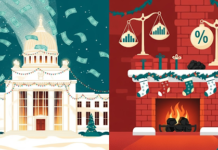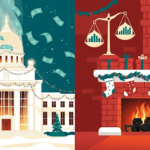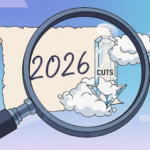When the Market Hopes, and the Fed Holds Back
Investors love a good narrative, and this week’s features Jerome Powell as the reluctant protagonist in a drama driven by market optimism and presidential pressure. With the Federal Open Market Committee meeting on May 6–7, many are hoping for fireworks, but they’re likely to get silence. Not only has the Fed made it clear it’s content with current rates, but it’s also signaled caution, especially with tariff uncertainty and sticky inflation still hanging in the air.
Former President Donald Trump is making noise again, demanding cuts, tweeting in all caps, and criticizing Powell. But here’s the catch: the data hasn’t cracked enough to warrant the Fed blinking. And that leaves investors caught in the middle.
We unpack the rising disconnect between hopes and probabilities. In This Week I Learned, we dig into the “neutral rate” concept—why it matters and what it means when everyone disagrees on where we are.
Could this be a case of ‘careful what you wish for’ on rate cuts? Let’s find out.
This Week I Learned…
What on Earth Is the Neutral Rate, and Why Should You Care?
This week I learned that we might be at the “neutral rate”—and nobody can agree what that even means.
The neutral interest rate is that theoretical sweet spot where monetary policy neither stimulates nor restricts economic growth. Think of it as cruise control—not speeding up, not slowing down.
Economists debate where that rate sits. The Fed currently pegs rates at 4.25%–4.50%, and many believe that’s close to neutral. But with tariffs rising, immigration policy tightening, and inflation still lurking, the data doesn’t paint a clear picture.
What complicates this? The divergence between “hard data” (GDP, employment, spending) and “soft data” (sentiment surveys, confidence indicators). Right now, sentiment is souring—but spending? Not so much. That’s why Powell and the Fed will likely wait for more apparent signs before cutting.
So next time someone asks why the Fed isn’t cutting, you can say: “This week I learned the Fed thinks we’re already in the neutral zone—and they don’t want to floor the gas just yet.”
The Fun Corner
The Rate That Broke the Market
Here’s a fun market trivia nugget: The last time the S&P 500 and the Dow posted nine consecutive winning days was in January 1992—back when Nirvana topped the charts and Powell wasn’t even in the Fed’s orbit.
What happened then? The market was recovering from a mild recession, and rate cuts were expected to fuel the recovery. Sound familiar?
But here’s the twist: in 1992, the Fed did cut rates—a lot. This time? The Fed seems content to sit tight. That makes today’s optimism a bit of a historical anomaly.
Moral of the story? Just because the market is partying like 1992 doesn’t mean the Fed feels nostalgic.
Trump Wants Cuts. Powell Wants Clarity.
This week’s Fed meeting isn’t likely to bring the news investors (or Donald Trump) are hoping for. Despite a record-breaking nine-day rally in the S&P 500, primarily driven by optimism over future rate cuts, markets may be pricing in a fantasy.
Trump has publicly, and loudly, demanded rate cuts. But Powell and his team are unconvinced. They’ve already cut rates three times since September, and at their last meeting signaled that further cuts will be slower than expected. Their reasoning? Tariffs, inflation, and economic uncertainty.
The Fed’s latest “dot plot” showed a scaled-back expectation of just 50 basis points in cuts this year. Compare that to the market’s bet on three cuts by year-end, and you see a serious expectation gap.
Adding political pressure to the mix hasn’t helped. Trump’s public tirades, including threats to fire Powell, have shaken confidence in Fed independence, a core pillar of U.S. market appeal. And while Trump later returned those remarks, the damage to market psychology was done—if only temporarily.
The Fed wants to see more hard data before changing its stance. With tariffs in a 90-day pause and inflation data still ambiguous, Powell’s message has been: wait and watch.
The risk? The rally could unwind quickly if the Fed stays put and Powell’s message reinforces caution. Markets are flying high, but reality may soon bring them back to earth.
The Last Say
Between Hope and Hesitation
This week’s newsletter captures a tension that’s becoming harder to ignore: the gap between what markets want and what the Fed is willing to do. With Trump turning up the political volume, investors cheering a rare nine-day rally, and Powell sticking to a data-first message, we’re set up for possible disappointment.
Optimism has buoyed markets, but Powell’s statements point toward patience, not pivoting. If the Fed holds firm this week, as expected, all eyes will shift to June. And if economic conditions don’t clearly deteriorate or if inflation rears up again, the path to rate cuts could stay blocked through the summer.
This is a reminder for investors: policy takes time, and pressure doesn’t always produce results. The Fed’s credibility rests on not reacting to headlines or political pressure, but on following the numbers. In the long run, that keeps markets stable—even if it frustrates them in the short term.
Stay sharp, stay informed, and remember: being early on rate cut bets isn’t the same as being right.























